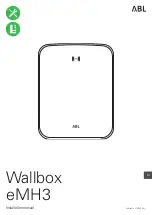
DRIVER SUPPORT
}}
* Option/accessory, for more information, see Introduction.
313
2. Follow the instructions provided. The proce-
dure is the same as when parking the vehicle.
The steering wheel may turn back slightly when
the function is completed and the driver may
have to turn the back before leaving the parking
space.
If PAP determines that the driver can leave the
parking space without assistance, the function
will deactivate before the vehicle is completely
out of the space.
Related information
•
Park Assist Pilot (PAP)
*
(p. 309)
•
Park Assist Pilot (PAP)
*
limitations (p. 313)
•
Park Assist Pilot (PAP)
*
symbols and mes-
sages (p. 315)
Park Assist Pilot (PAP)
*
limitations
The PAP function may be limited in certain situa-
tions.
The PAP parking sequence is cancelled
A parking sequence will be cancelled:
•
if the vehicle is driven too fast (above approx.
4 mph (7 km/h)
•
if the driver taps
Cancel
in the center display
•
if the driver moves the steering wheel with
sufficient force.
•
if the anti-lock brakes or Electronic Stability
Control are activated (e.g., if a wheel begins
to spin or lose traction)
In such cases, a text message will explain why
the parking sequence was cancelled.
NOTE
•
PAP will not function correctly if its sen-
sors are obstructed by dirt, snow, etc.
•
In certain situations, PAP may not be able
to measure a parking space. This could
be due to external sources of sound (e.g.,
a vehicle's horn, tires on wet asphalt,
pneumatic brakes, noise from a motorcy-
cle's exhaust, etc.) emitting ultrasound
using approximately the same frequen-
cies as PAP.
Points to keep in mind
PAP is a parking aid only and the driver should
always be prepared to take control and cancel a
parking sequence. This can be due to one or
more of the following factors:
•
PAP's function is based on the way that the
vehicles are parked behind and in front of
your parking space. If they are, for example,
parked too close to the curb, there is a risk
that your vehicle's tires or wheel rims could
be damaged by the curb during the parking
procedure.
•
PAP is intended to provide parking assis-
tance on straight streets, not sections of
street with curved or irregular curbs. Be sure
that your vehicle is parallel to the curb when
PAP measures the parking space.
•
PAP may not be able to provide parking
assistance on narrow streets due to lack of
space to maneuver the vehicle. In situations
like this, it may help to drive between 1.5-5 ft
(0.5-1.5 m) from the side of the road where
the parking space is located.
•
Use only approved tires with the correct infla-
tion pressure because this affects PAP's
capacity to provide parking assistance.
Changing to a different approved tire size
may affect PAP's parameters. Consult a
trained and qualified Volvo service technician.
•
Heavy rain or snow may inhibit PAP's
capacity to correctly measure a parking
space.
Summary of Contents for XC90 T8 TwinEngine Plug-In Hybrid
Page 1: ...WEB EDITION OWNER S MANUAL...
Page 2: ......
Page 13: ...INTRODUCTION...
Page 17: ...INTRODUCTION 15 Overview...
Page 19: ...INTRODUCTION 17 Preparations for charging the hybrid battery p 372 Starting the engine p 364...
Page 58: ......
Page 59: ...SAFETY...
Page 94: ...SAFETY 92 Related information Airbag system p 87 Seat belts p 62...
Page 95: ...INSTRUMENTS AND CONTROLS...
Page 175: ...CLIMATE...
Page 204: ......
Page 205: ...LOADING AND STORAGE...
Page 221: ...LOCKS AND ALARM...
Page 246: ......
Page 247: ...DRIVER SUPPORT...
Page 339: ...STARTING AND DRIVING...
Page 396: ......
Page 397: ...INFOTAINMENT...
Page 434: ......
Page 435: ...WHEELS AND TIRES...
Page 462: ......
Page 463: ...MAINTENANCE AND SERVICING...
Page 508: ......
Page 509: ...SPECIFICATIONS...
Page 511: ...SPECIFICATIONS 509 Location of labels...
Page 533: ......
















































